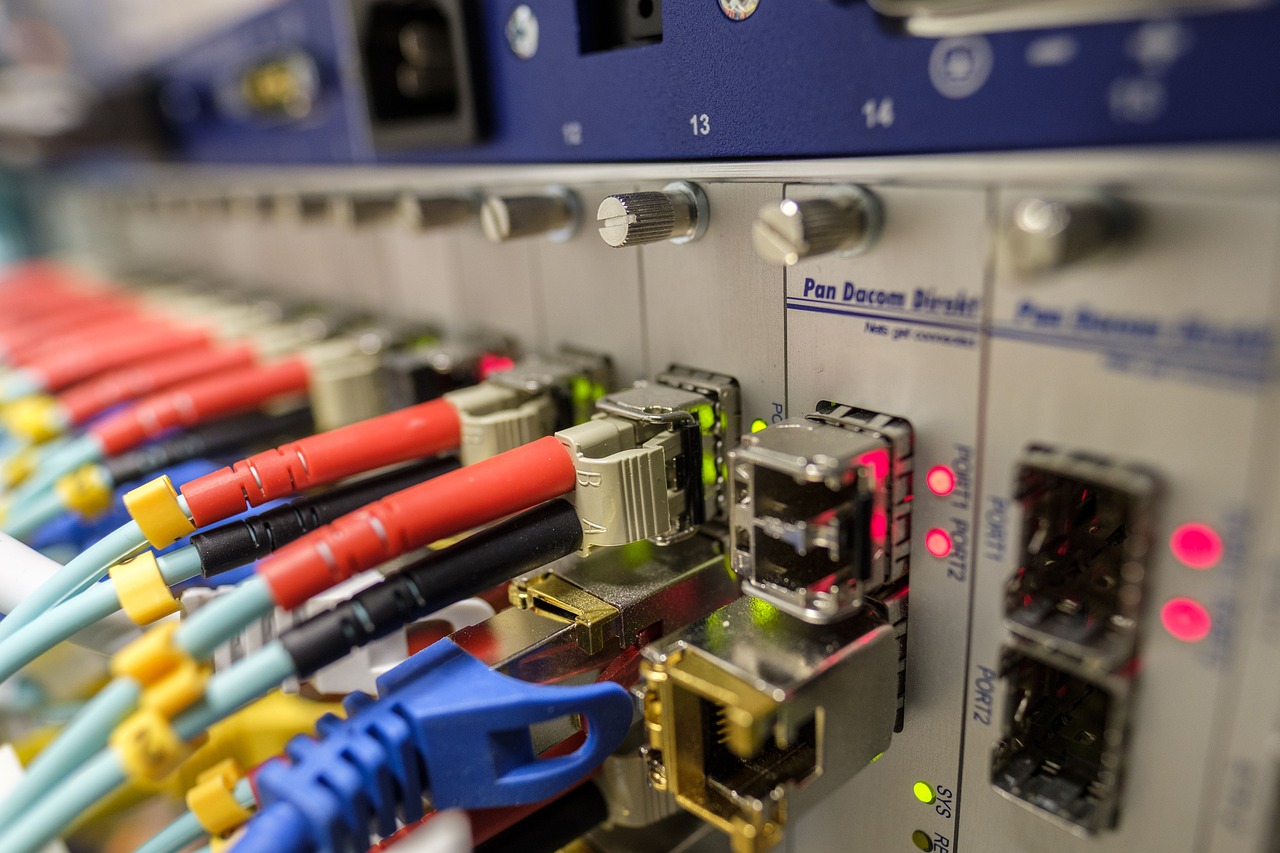Mastering Fiber Optic Communication: A Guide to Nylon Cable Application for FTTR

Understanding Fiber Optic Basics
Fiber optic technology has revolutionized the way data is transmitted and communicated. Fiber optic stands out for its exceptional speed and efficiency in data transmission, making it a preferred choice for high-speed internet and telecommunications networks. Unlike traditional copper wire systems, fiber optics can carry large amounts of data over long distances with minimal signal loss.
In addition to speed, fiber optic technology is known for its durability and reliability. The optical fibers used in these systems are not susceptible to electromagnetic interference or radio frequency interference, making them highly reliable for transmitting critical data.
When delving into the components of a fiber optic system, it's essential to understand the key elements that make this technology function seamlessly. The core, cladding, and coating are integral parts of an optical fiber. The core serves as the pathway for light transmission, while the cladding ensures that the light remains trapped within the core through total internal reflection. Furthermore, the coating provides protection to the delicate fibers from environmental factors and physical damage.
Moreover, connectors and adapters play a crucial role in ensuring the efficient operation of fiber optic systems. Connectors facilitate the connection between individual fibers, enabling seamless data transmission across networks. Adapters are used to join different types of connectors or cables together, providing flexibility and compatibility within fiber optic infrastructure.
The Role of Nylon Cable in Fiber Optic Systems
As fiber optic technology continues to advance, the role of Nylon Cable has become increasingly significant in ensuring the seamless operation and longevity of fiber optic systems. Understanding the composition and characteristics of Nylon Cable is essential for appreciating its vital role in this cutting-edge technology.
Nylon Cable: Composition and Characteristics
Strength and Flexibility
One of the defining features of Nylon Cable is its exceptional strength and flexibility. Unlike traditional cables, nylon fibers are known for their robustness, allowing them to withstand tension and bending without compromising signal integrity. This inherent strength ensures that data transmission remains uninterrupted even in challenging environmental conditions or during installation processes.
Resistance to Environmental Factors
Another key characteristic of Nylon Cable is its remarkable resistance to environmental factors. Whether exposed to extreme temperatures, moisture, or corrosive substances, nylon fibers exhibit unparalleled resilience. This resistance makes them an ideal choice for outdoor installations and harsh industrial environments where traditional cables may deteriorate over time.
Why Nylon Cable is Preferred for FTTR Applications
Ease of Installation
In the context of Fiber to the Room (FTTR) applications, the ease of installation offered by Nylon Cable is a compelling advantage. Its flexibility and lightweight nature simplify the process of laying down cables within residential or commercial spaces. This streamlined installation not only reduces deployment time but also minimizes disruptions to existing structures, making it an ideal choice for retrofitting fiber optic systems into established buildings.
Long-Term Cost-Effectiveness
The long-term cost-effectiveness of Nylon Cable further solidifies its preference for FTTR applications. With its durable composition and resistance to environmental degradation, nylon fibers require minimal maintenance over extended periods. This translates into reduced operational costs and a lower total cost of ownership for FTTR deployments, aligning with the economic considerations crucial for sustainable infrastructure development.
Exploring FTTR: Advancements in Fiber Optic Communication
As the demand for high-speed internet and seamless connectivity continues to grow, the evolution of fiber optic technology has led to significant advancements, particularly in the context of Fiber to the Room (FTTR) applications.
Understanding FTTR: From Concept to Implementation
The Evolution of Fiber to the Room
The concept of Fiber to the Room represents a paradigm shift in delivering high-speed internet and data connectivity directly to individual rooms within residential or commercial buildings. Unlike traditional broadband setups, where a single connection is distributed across multiple users, FTTR brings fiber optic cables directly into each room, ensuring dedicated and reliable access to high-speed internet services. This evolution marks a substantial improvement in providing unparalleled connectivity experiences for end-users.
Technical Requirements for FTTR Systems
Implementing an effective FTTR system requires meticulous attention to technical requirements. The deployment of optical network terminals (ONTs) within individual rooms serves as a fundamental component of FTTR systems. These ONTs act as interfaces between the optical fiber network and users' devices, enabling seamless data transmission and reception. Additionally, specialized splitters are employed to efficiently distribute optical signals from a single fiber optic cable across multiple ONTs within a building, optimizing resource utilization and network performance.
Comparing FTTR with Traditional Fiber Optic Solutions
Enhanced User Experience
In contrast to traditional fiber optic solutions that rely on shared connections for multiple users, FTTR offers an enhanced user experience by providing dedicated fiber connections directly into individual rooms. This direct access ensures consistent high-speed internet services without being impacted by network congestion or bandwidth limitations experienced in conventional setups. As a result, users can enjoy seamless streaming, online gaming, video conferencing, and other bandwidth-intensive activities with minimal latency and interruptions.
Infrastructure and Scalability Considerations
When comparing FTTR with traditional fiber optic solutions, infrastructure and scalability emerge as critical considerations. Traditional setups often require extensive cabling infrastructure to reach individual rooms or units within a building, leading to complex installation processes and higher material costs. In contrast, FTTR streamlines infrastructure requirements by utilizing Nylon Cable that offers exceptional flexibility and ease of installation. Moreover, the scalability of FTTR systems allows for seamless expansion as additional rooms or units are added within a building without compromising network performance or reliability.
Practical Applications and Visible Benefits of FTTR
The implementation of Fiber to the Room (FTTR) technology has led to diverse real-world applications, showcasing its versatility and impact across various sectors.
Real-World Applications of FTTR
Educational Institutions
Educational institutions, ranging from schools to universities, benefit significantly from FTTR applications. By integrating Nylon Cable-based FTTR systems, educational facilities can ensure high-speed internet access in classrooms, libraries, and administrative offices. This seamless connectivity supports interactive learning platforms, online research resources, and administrative operations, enhancing overall efficiency and productivity within academic environments.
Hospitality Industry
In the hospitality industry, FTTR plays a pivotal role in delivering enhanced guest experiences. Hotels and resorts leverage FTTR technology to provide reliable high-speed internet access directly to guest rooms. This direct connectivity enables seamless streaming services, video conferencing capabilities, and online concierge amenities, elevating the overall quality of stay for guests while also supporting operational functions such as reservation management and guest communications.
Visible Benefits: Why FTTR is the Future
Improved Connectivity and Speed
The visible benefits of FTTR are underscored by the improved connectivity and speed it offers. With Nylon Cable-enabled FTTR systems, users experience consistent high-speed internet access without being affected by shared network limitations. This translates into uninterrupted streaming services, lag-free online gaming experiences, and efficient data transfers for both personal and professional use. The reliability of FTTR technology ensures that users can seamlessly engage in bandwidth-intensive activities with minimal latency or disruptions.
Economic and Environmental Advantages
Beyond its technological prowess, FTTR presents economic and environmental advantages that position it as a sustainable solution for modern connectivity needs. The efficient deployment of Nylon Cable reduces installation time and material costs while also minimizing disruptions to existing structures during implementation. Additionally, the long-term durability of nylon fibers contributes to reduced maintenance requirements and extended service life, aligning with environmentally conscious practices for infrastructure development.
See Also
The Advantages of Optical Cable in FTTR for Visible Fiber to the Room Configuration
Improving Indoor Connectivity Using FTTR Concealed Fiber Cables
Options for LC-LC Duplex 9/125µm SM Bend Insensitive Fiber Optic Patch Cables
Key Maintenance Guidelines for FTTX Outdoor Precon Fiber Optic Distribution Termination Box


